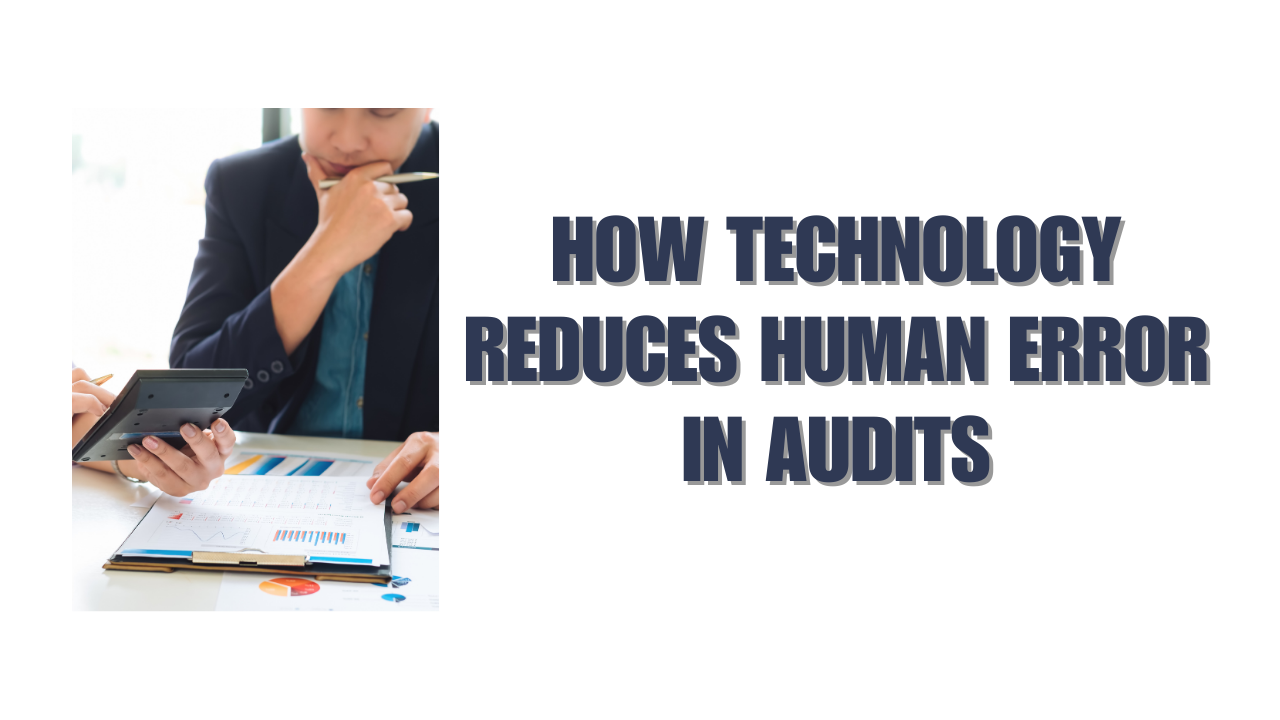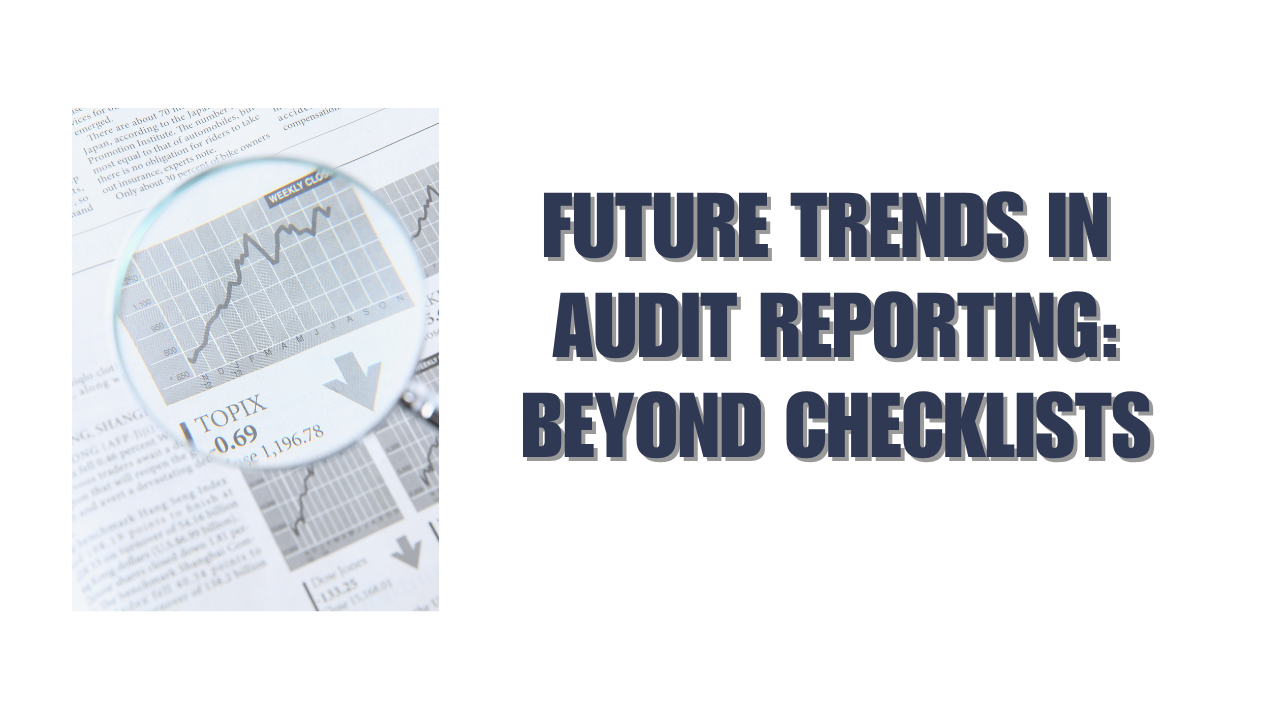Audits are critical for financial accuracy, regulatory compliance, and corporate governance. Yet, traditional auditing methods often rely heavily on manual processes, which can introduce human error. Even small mistakes-misentered data, overlooked transactions, or miscalculated balances-can have significant consequences, from compliance breaches to misguided business decisions.
Technology is transforming this landscape, providing tools that minimize human error while enhancing accuracy, efficiency, and insight. For boards, CFOs, and finance teams, understanding how technology reduces errors in audits is essential to modernizing internal controls and strengthening stakeholder confidence.
The Human Error Problem in Audits
Human error in audits can arise from multiple sources:
- Manual Data Entry: Typographical mistakes or omissions can distort financial statements.
- Complex Calculations: Errors in spreadsheets or accounting systems can misstate balances.
- Oversight and Fatigue: Long audit cycles increase the likelihood of overlooked transactions or missed anomalies.
- Subjective Judgments: Manual interpretation of transactions can lead to inconsistencies, particularly in complex or unusual scenarios.
These errors can cascade, impacting financial reporting, compliance, and corporate reputation. Traditional audits require multiple checks to catch mistakes-a process that is both time-consuming and costly.
How Technology Addresses Human Error
Modern auditing leverages a variety of technologies to reduce reliance on manual processes and improve accuracy. Key interventions include:
1. Automated Data Entry and Processing
Automation tools eliminate repetitive manual entry tasks. By directly integrating financial systems with audit software, data flows seamlessly, reducing the risk of typographical errors and ensuring consistency across reports.
2. Advanced Analytics and AI
Artificial intelligence (AI) and data analytics tools can scan vast datasets to detect anomalies, outliers, or unusual patterns that may indicate errors or irregularities. AI algorithms improve accuracy by identifying risks that might be overlooked during manual reviews.
3. Real-Time Validation Checks
Audit software can validate transactions in real time, flagging inconsistencies, duplicate entries, or missing information immediately. Early detection reduces the chance that errors propagate through the financial statements.
4. Digital Audit Trails
Automated audit trails record every transaction, adjustment, and approval with timestamps and user identification. This reduces reliance on memory or manual logs, ensuring every action is traceable and verifiable.
5. Standardized Workflow and Templates
Digital workflows and templates enforce consistent audit procedures. By standardizing data capture, calculation methods, and documentation, organizations reduce variability and human error in reporting.
6. Machine Learning for Predictive Insights
Machine learning models can identify trends and potential risks based on historical data. These predictive insights help auditors focus on high-risk areas, reducing errors in judgment and analysis.
Benefits of Reducing Human Error in Audits
Minimizing human error through technology delivers multiple strategic benefits:
- Improved Accuracy: Automated processes and validation checks reduce misstatements, ensuring reliable financial reporting.
- Time Efficiency: Auditors can focus on high-value analysis rather than repetitive tasks, shortening audit cycles.
- Regulatory Compliance: Accurate, verifiable data helps organizations meet regulatory requirements and avoid penalties.
- Enhanced Stakeholder Confidence: Reliable audits strengthen trust among investors, boards, and regulatory bodies.
- Risk Mitigation: Early identification of anomalies reduces the likelihood of fraud, errors, or operational inefficiencies.
These advantages demonstrate that technology is not merely a convenience-it is a critical component of effective auditing.
Real-World Applications
Case Study 1: Large Manufacturing Firm
A multinational manufacturer integrated AI-powered analytics into its audit process. The technology flagged inconsistencies in expense reporting that manual checks had overlooked. By identifying errors early, the company avoided potential regulatory issues and improved internal controls.
Case Study 2: Financial Services Company
A financial services firm implemented automated data validation and digital audit trails across multiple departments. The result was a significant reduction in reconciliations and a decrease in errors due to manual data entry, allowing auditors to focus on strategic risk assessment rather than repetitive verification.
Case Study 3: Mid-Sized Retailer
A mid-sized retail chain adopted standardized digital audit templates and workflow automation. By reducing manual spreadsheet work, the organization minimized calculation errors, shortened audit cycles, and improved the reliability of its monthly financial reports.
These examples show how technology can transform audits from a labor-intensive, error-prone process into a precise, efficient, and strategic function.
Emerging Technologies in Error Reduction
Auditing continues to evolve with technological innovation. Key emerging tools include:
- Robotic Process Automation (RPA): Automates repetitive tasks such as data extraction, reconciliations, and report generation.
- Blockchain-Based Ledgers: Provides immutable records of transactions, reducing errors and enhancing transparency.
- Cloud-Based Audit Platforms: Centralize data and enable real-time collaboration while maintaining security and integrity.
- Natural Language Processing (NLP): Analyzes contracts, emails, and other unstructured data to identify risks or inconsistencies.
Adopting these tools positions organizations to reduce errors proactively and respond to evolving regulatory and operational demands.
Role of Leadership in Technology-Driven Audits
CEOs, CFOs, and audit committees must support technology adoption to maximize benefits:
- Invest in Appropriate Tools: Select audit platforms, AI solutions, and automation tools suited to organizational needs.
- Promote Training and Competency: Ensure auditors and finance teams are proficient in using new technologies.
- Integrate Technology With Risk Management: Align automation and analytics with broader risk assessment and governance practices.
- Monitor and Review Processes: Continually evaluate the effectiveness of technology solutions in reducing errors and improving efficiency.
Leadership involvement ensures that technology adoption is strategic, aligned with compliance, and maximizes audit reliability.
Conclusion
Human error has always been a challenge in audits, but technology offers powerful solutions. From automation and AI to digital audit trails and standardized workflows, these tools reduce mistakes, improve accuracy, and enhance efficiency.
At Aurora Financials, we integrate cutting-edge technology into our auditing processes to safeguard financial data, improve transparency, and support strategic decision-making. By reducing human error, organizations can strengthen compliance, build stakeholder trust, and ensure that audits provide maximum value beyond mere regulatory checklists.
In today’s digital business environment, leveraging technology is not optional-it is essential for accurate, reliable, and forward-looking audits.






